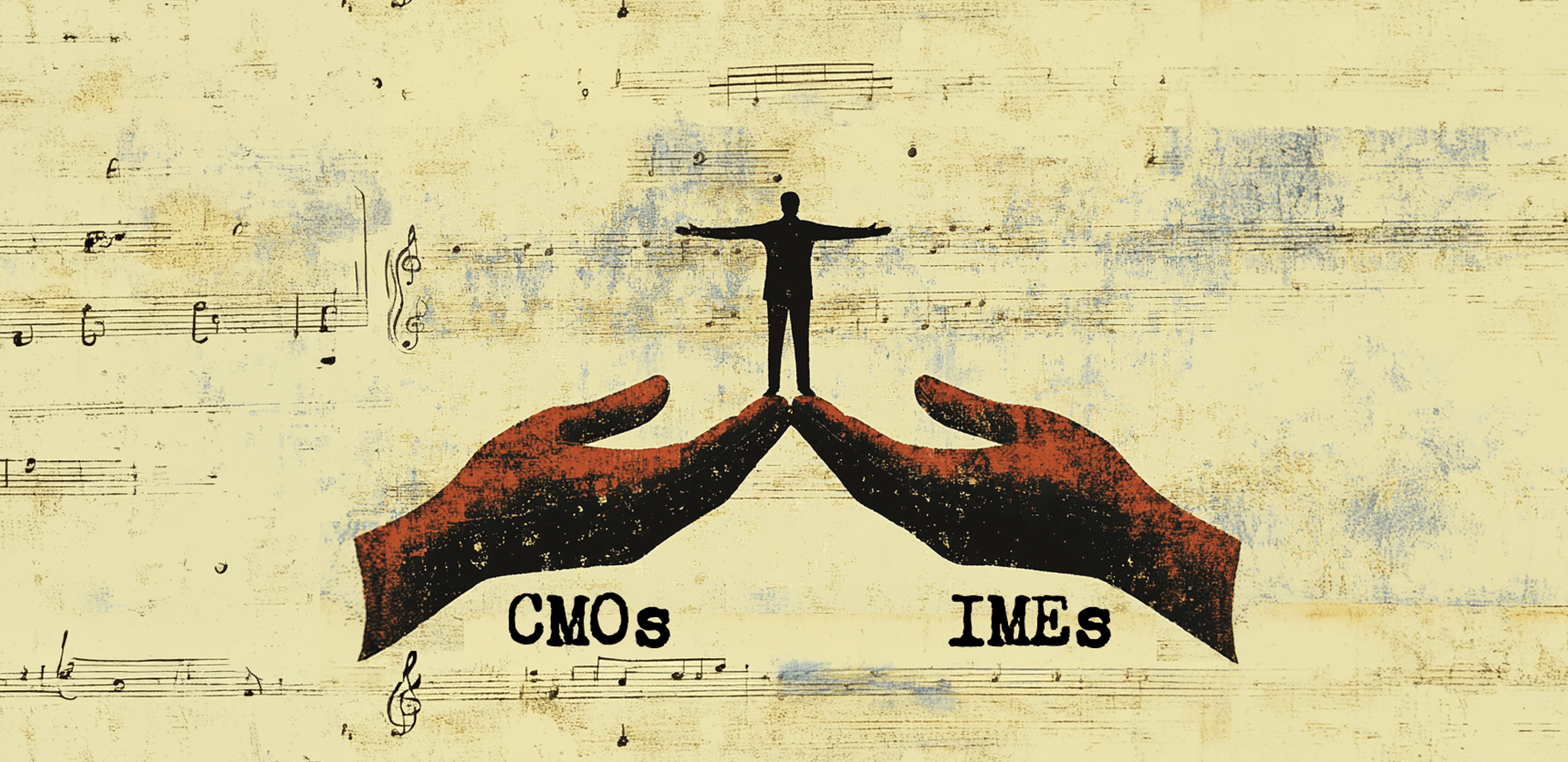
Navigating the rights management landscape: CMOs vs. IMEs in rights management
In the complex realm of the music industry, the efficient management of copyrights and related rights is paramount for ensuring fair compensation to creators.
Two types of entities play crucial roles in this arena are Collective Management Organizations (CMOs) and Independent Management Entities (IMEs). While they share common ground in their commitment to collective management of music rights, there are nuanced differences that define their approaches and functionalities.
Similarities Between CMOs and IMEs:
– Both do collective rights management: CMOs and IMEs are pivotal players in the collective management of music copyrights and related rights. They act as rights managers, representing the interests of rights holders, including musicians, composers, lyricists, and publishers.
– Collective representation: a core similarity lies in their function as representatives for their members or clients. Whether it’s negotiating licensing agreements or collecting royalties, both entities work for the collective benefit of the rightsholders.
– Royalty Collection and Distribution: both CMOs and IMEs engage in the collection of fees and royalties for the use of copyrighted works. The collected funds are then distributed to their respective members, ensuring a fair and equitable compensation structure.
In short, Recital 15 of of the Directive 2014/26/EU on collective management states that “such independent management entities carry out the same activities as collective management organizations”; it follows that, from an economic perspective, they carry out the same type of activity.
Differences Between CMOs and IMEs:
– Control or ownership by rightshoders: quoting again Directive 2014/26/EU on collective management, CMOs and IMEs differ “inter alia, because they are not owned or controlled by rightsholders”. This means that the “I” from “IME” stands for independence, which implies the lack of control or ownership by the rightsholders.
– Degree of flexibility: one of the primary distinctions arises from the level of flexibility each type of entity offers. CMOs operate on a larger scale, have regulatory and competitive restraints and therefore are more inclined towards an homogeneous management. In contrast, IMEs are currently -for good or for bad- smaller scale companies and have a lighter regulatory burden, which allows them to provide more flexible and personalized services.
– Management obligation: traditional CMOs are usually obliged by regulation to accept any creator that wants to be a member of the society while, on the other hand, IMEs have the freedom to accept or not clients.
– Freedom over rights management: IMEs provide rights holders with more freedom to manage their works, allowing them to make decisions regarding licensing and other aspects of rights management. CMOs typically operate under more homogenous models.
– Technology drive: Having appeared in the 21st. century – Directive 2014/26/EU stems from year 2014- and being native digital companies, IMEs tend to be technology driven, in comparison to traditional CMOs players, which in some cases are century-old organizations.
– Cost efficiency: IME’s have the capacity to be more competitive and flexible in terms of fees, due to lighter structure and more technology driven services; they are also highly incentivized to offer better processes to compete with traditional CMOs. Conversely, CMOs fee tend to be less competitive and include social deductions, which increase the overall costs for the rights holders.
– Speed and transparency: Due to its newer creation, flexibility and their technology based approach, IMEs can usually operate at a higher speed than traditional CMOs and can also offer more detailed and granular information to their clients.
In Conclusion:
Understanding the nuances of both CMOs and IMEs is crucial for navigating the intricate landscape of copyright and related rights management in the music industry. While they share common goals, the choice between a CMO and an IME often depends on the specific needs, preferences, and scale of individual rights holders. As the industry evolves, both entities continue to play pivotal roles in shaping the future of rights management, ensuring that creators are fairly compensated for their artistic contributions.